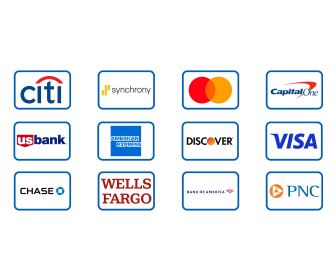How to Use a Credit Card Without Getting Into Debt (Really)
Credit cards can be powerful tools — or financial traps. Used the right way, they help you build credit, earn rewards, and protect your purchases. Used carelessly, they lead to debt spirals and endless interest payments. The good news? Staying debt-free while using credit cards is completely possible. Here’s the real playbook.
1. Treat It Like Cash, Not Credit
The biggest mistake people make is seeing their credit limit as “extra money.” It’s not. If you wouldn’t buy something with your checking account, don’t buy it with your card either. Think of the credit card as a safer, reward-earning version of your wallet — not a loan.
2. Always Pay in Full — Every Single Month
This is the golden rule. Paying only the minimum means the rest rolls over and starts collecting interest — often 20% or higher. Even a small balance can snowball fast. Set up automatic payments for the full statement balance so you never carry debt unintentionally.
3. Know Your Billing Cycle
Most cards have a 25–30 day grace period between the statement close and the due date. If you pay your balance in full during this window, you pay zero interest. But if you miss it even once, that grace period disappears until you pay off everything again.
4. Keep Your Utilization Low
Your credit utilization ratio — how much of your available credit you’re using — directly affects your score. Try to keep it under 30% (ideally below 10%). For example, if your limit is $1,000, never let your statement balance exceed $300. The lower, the better.
5. Automate and Track Everything
Use apps or your bank’s dashboard to track spending categories, upcoming due dates, and total balance. Many cards also allow you to set alerts for when you approach a certain amount — a simple way to stay disciplined and avoid surprises.
6. Avoid Cash Advances Like the Plague
Cash advances charge interest immediately — no grace period, no points, just pain. They often come with extra fees and higher APRs (sometimes 29%+). If you need cash, use a debit card instead. Credit cards are for transactions, not withdrawals.
7. Don’t Chase Rewards at the Expense of Balance
Many people fall into the trap of overspending just to earn points or meet a welcome bonus. But any interest you pay will instantly erase those rewards. Rewards are valuable only if you never pay a cent of interest — period.
8. Build a “Payment Buffer” Fund
Keep a small emergency fund dedicated to covering your credit card bill if your paycheck is late or an expense pops up. This safety cushion helps you pay on time and avoid the debt domino effect.
Pro tip: Set your card’s autopay for the full balance, not just the minimum. That one setting protects you from interest charges, late fees, and credit score dips — effortlessly.
9. Use Your Statement Like a Report Card
Each monthly statement shows where your money really goes. Review it like a spending diary: categories, trends, and subscriptions you forgot about. You’ll spot leaks early — and you’ll feel more in control of your finances.
Final Thoughts
Credit cards aren’t the enemy — misuse is. By paying in full, automating your payments, and tracking your spending, you can enjoy the benefits without ever falling into debt. The secret isn’t avoiding credit; it’s mastering it.
Not financial advice. Credit card policies and interest rates vary by issuer and profile. Always review official terms before applying or making financial decisions.
Continue reading: Cash Back vs. Travel Rewards: Which Category Wins? · The Hidden Credit Card Fees You’re Probably Paying



